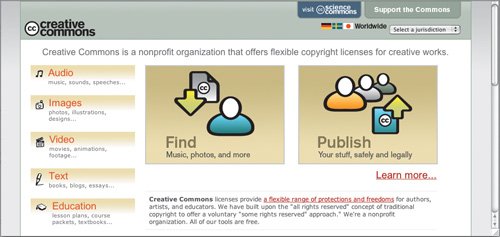Using Others Materials
Using Others' MaterialsIt would be great to spice up your videos by grabbing a song from one of your favorite bands or a clip from your favorite film. Fight that impulse! There are pretty stiff regulations written to prevent you, and everybody else, from recycling stuff illegally. Generally speaking, it's either impossible or prohibitively expensive for an individual to get permission to use material from songs, music, movies, or photos copyrighted under U.S. law and registered with the U.S. Copyright Office. There are some exceptions, most notably the "fair use" provision of copyright law, which allows people to quote from or use part of a copyrighted work under certain conditions. The Stanford University's online Copyright and Fair Use Center describes it this way:
Using copyrighted material for business reasons is not considered fair use, so you can forget about using "Born to Be Wild" as the soundtrack for a video on your uncle's car dealership vlog. But even non-commercial use can be tricky. The U.S. Copyright Office explains the problem this way: "The distinction between 'fair use' and infringement may be unclear and not easily defined. There is no specific number of words, lines, or notes that may safely be taken without permission. Acknowledging the source of the copyrighted material does not substitute for obtaining permission." When in doubt, leave it out or seek legal advice.
Creative Commons LicensesThe legal headaches involved in using copyrighted material are one reason why videobloggers often love to remix and use each other's material. A nonprofit organization called Creative Commons has made that simple to do by developing flexible and voluntary "some rights reserved" copyright licenses for creative works (Figure 2.12). Creative Commons licenses spell out exactly how an individual's audio, video, images, or text may be used by others. That's why the use of Creative Commons licenses is encouraged by many in the videoblogging and blogging communities. Figure 2.12. Creative Commons offers flexible, customizable ways to license your videos and share them with others (http://creativecommons.org).
Creative Commons offers six main licenses. As explained at http://creativecommons.org/about/licenses/meet-the-licenses, the most restrictive license is Attribution Non-commercial No Derivatives, abbreviated as "by-nc-nd" (Figure 2.14). This license is known as the "free advertising" license because it allows people to download your works and share them with others as long as they give you credit and link back to your Web site. But under the terms of the license, they are not allowed to change the works in any way or use them commercially. Figure 2.14. Creative Commons uses abbreviations and symbols to indicate the terms of a license. The "by-nc-nd" (non-commercial/no derivatives) license is the most restrictive.
The least restrictive license is called Attribution (by), which allows people to do virtually anything with your work, including use it commercially, as long as they give you credit for the original. Attribution Non-commercial Share Alike, abbreviated as "by-nc-sa" is the license most commonly used by videobloggers (Figure 2.15). That's because it offers the greatest flexibility for people to "remix, tweak, and build upon your work as long as they do it non-commercially." With this license, people who use your work must credit you, and any creations based on your original must be licensed under the same terms. Figure 2.15. Most vloggers who license their work under a Creative Commons license choose Non-commercial Share Alike, abbreviated as "by-nc-sa," because it gives them credit for their work while still allowing others to remix their video gems.
Check out the Creative Commons Web site to learn more about the rights, restrictions, and full legal code for each license. Licensing your work through Creative Commons is a terrific way to protect and promote your videoblog. As we discuss in the next chapter, it's also a great source of cool stuff to play with on your own vlog. |
EAN: 2147483647
Pages: 81